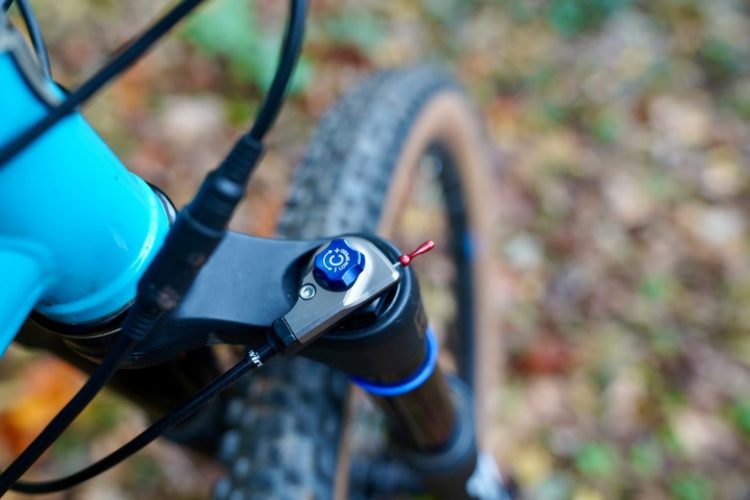
Here’s another inquiry from a rider who started mountain biking in July. “How do I know when to put my saddle down or up, and how much should I push it down?” This seems like a super helpful inquiry that many readers likely have their own take on. I will attempt the first pass at an answer, but please add your suggestions in the comments section.
Having your seat post at full extension — assuming it is set at the proper height — provides an optimal pedaling platform with your legs getting their full range of motion. Pushing the saddle and post down allows you to move the bike around more dynamically beneath you. On rougher trails, the bike may be moving around with the contours of the ground, and a lower saddle will let the bike dance around without transferring all of that movement to your body.

At the most basic level, it’s good to drop your post any time you want to let your bike move around, unencumbered by the saddle’s interaction between your legs and butt. Mountain bike skills coaches sometimes refer to this as “bike/body separation.” A lot of riders like the post down on any descent that’s longer than a few seconds, and they typically pop it up as soon as things flatten out or turn uphill. I generally press the post all of the way down on any descent and raise it back up whenever the hubs are level or pointed up. I say “generally” because, as with everything, there is some gray area to play with.
If a trail is constantly undulating, with little descents and climbs every few meters, I might leave the post up so I can pedal wherever I get a chance. If that same trail were extra rough or fast I might leave the saddle down to let the bike move around underneath me more, preferring to stand and pump through the bike for speed. If there are successive logs to hop over or drops to pop off, the post is always slammed low. Folks who drop their post with an Allen key or quick release instead of a dropper post usually keep the saddle up until the crest of a long descent and leave it down until they reach the base.

So, all the way up on climbs and slammed down on descents. Is that it? For some folks those metrics are sufficient, but there are several caveats. A good number of riders will lower their saddle by 1-3cm on technical climbs when they want a good pedaling platform with the saddle but they also need the bike to move around more and to use some body English to maneuver over and around obstacles. Try riding an uphill rock garden with the post fully extended, then repeat with your saddle slightly lowered. You might have an easier time getting through the trickiest bits with a few centimeters of drop.
Our lead editor, Jeff Barber, is exceptionally tall, and he rides big bikes with a lot of dropper travel to accommodate his leg length. He says that the dropper is useful when he needs to pass beneath low branches or fallen trees that he doesn’t want to knock his noggin on. In this case, Jeff is dropping the saddle all the way down, regardless of the trail slope or smoothness.
What special cases or location-specific dropper techniques do you employ while enjoying singletrack? Please share in the comments so we can all try them!
Check out our dropper post buyers guide and our picks for the best dropper posts.



















